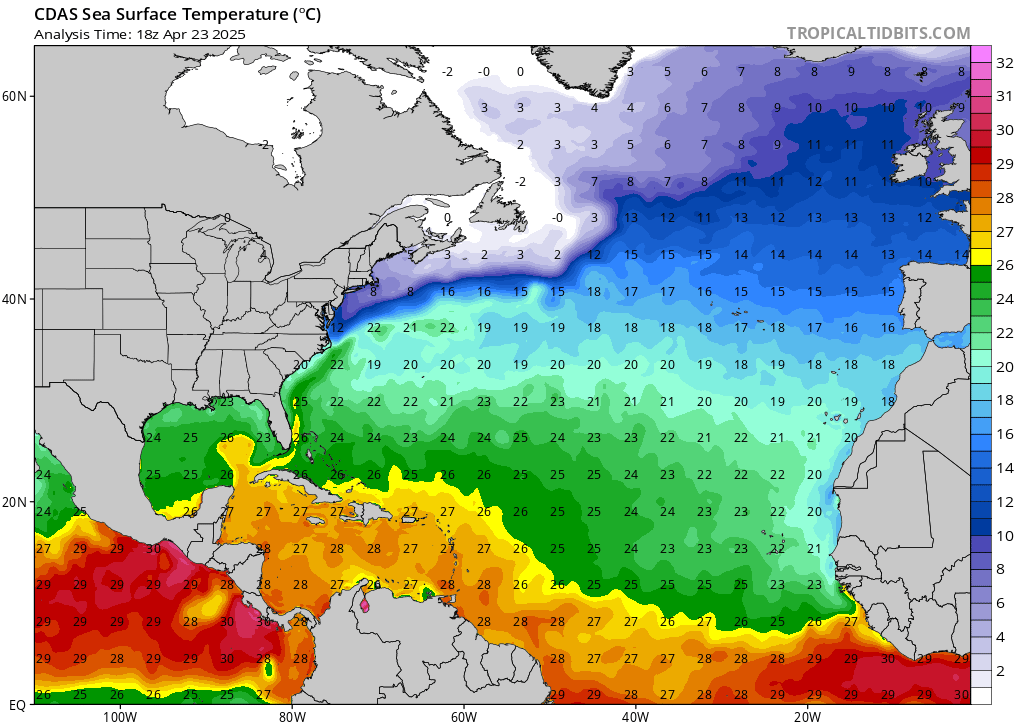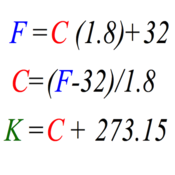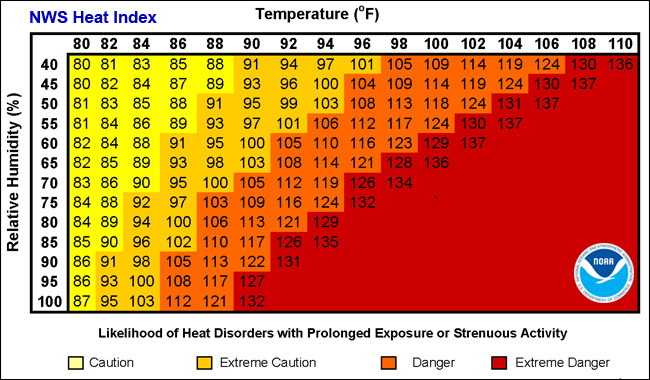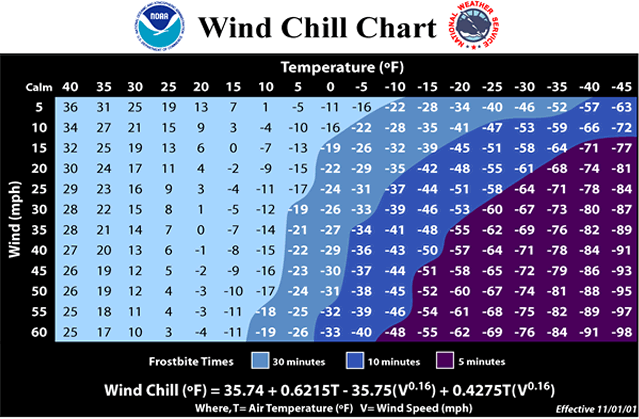
Chapter 3-- Temperature
TEST 2 OCTOBER 20TH --- on chapters 3 - 4 and 5 ---- Test 2 is OCTOBER 20TH
NO CALCULATORS ON EXAM -- READ THIS!!!!!!!
https://richhoffmanclass.com/test2review.html IT HAS EVERYTHING YOU NEED TO GET AN A ON THE EXAM.
https://richhoffmanclass.com/test2review.html --- NEW -- REVIEW FOR TEST 2
VIDEO 1 - CHAPTER 3
Temperature is one of the most basic elements of weather and climate.
The daily mean temperature
is determined by averaging the 24 hourly readings or by adding the maximum and
minimum temperatures for a 24-hour period and dividing by two. The daily temperature
range is computed by finding the difference between the maximum and minimum
temperatures. Other temperature data involving longer periods include the monthly
mean temperature (the sum of the daily means for each day of the month divided
by the number of days in the month), the annual mean temperature (the average
of the twelve monthly temperatures), and the annual temperature range (the difference
between the warmest and coldest monthly mean temperatures).
Climate data
The controls of temperature, those factors that cause temperature to vary from place to place, are:
(1) differential heating
of land and water
(2) ocean currents
(3) altitude
(4) geographic position
(5) cloud cover
(6) albedo
On maps illustrating the world distribution of temperature, isotherms, lines that connect points of the same temperature, generally trend east and west and show a decrease in temperature poleward. Moreover, the isotherms illustrate a latitudinal shifting of temperatures caused by the seasonal migration of the Sun's vertical rays and also reveal the presence of ocean currents. The north-south migration of isotherms is more pronounced over the continents because the temperatures do not fluctuate as much over water.
Current
US Temperatures
https://www.wunderground.com/maps/temperature/us-current
https://www.wpc.ncep.noaa.gov/html/sfc-zoom.php
Annual temperature range is small near the equator and increases with an increase in latitude. Outside the tropics, annual temperature range also increases with an increase in continentality. For example, Islip, NY has a summer time high of 83 and a winter time high of 38. Miami, Fl: Summertime High: 92 Winter: 77.
The primary control of daily temperature changes is Earth's rotation. However, the magnitude of these changes is variable and influenced by local factors, local weather conditions, or both.
As a consequence of the mechanism by which Earth's atmosphere is heated, the months of the highest and lowest temperatures do not coincide with the periods of maximum and minimum incoming solar radiation. Although the greatest intensity of solar radiation occurs at the time of the summer solstice, in the Northern Hemisphere the months of July and August are generally the warmest of the year. Conversely, in the Northern Hemisphere a minimum of solar energy is received in December at the time of the winter solstice, but January and February are usually colder.
 Thermometers
measure temperature either mechanically or electrically. Most mechanical thermometers
are based on the ability of a substance to expand when heated and contract when
cooled.
Thermometers
measure temperature either mechanically or electrically. Most mechanical thermometers
are based on the ability of a substance to expand when heated and contract when
cooled.
One type of mechanical thermometer, the liquid-in-glass thermometer, includes maximum thermometers, which use liquid mercury, and minimum thermometers, which contain a liquid of low density, such as alcohol. A bimetal strip mechanical thermometer is frequently used in a thermograph, an instrument that continuously records temperature. Electrical thermometers use a thermistor (a thermal resistor) to measure temperature.
Temperature scales use reference
points, called fixed points.
READ PAGES 70 TO 73...
There are several scales and units exist for measuring temperature. The most common are:
Three common temperature scales are
The focus is more on Fahrenheit scale and Celsius scale.
(1) the Fahrenheit scale,
which is defined by using the ice point (32°) and steam point (212°)
(2) the Celsius scale, a decimal scale on which the melting point of ice is
set at 0 and the boiling point of water at 100°
(3) the Kelvin or absolute scale, where the zero point represents the temperature
at which all molecular motion is presumed to cease (called absolute zero), the
ice point is set at 273, and the steam point at 373.
Convert Celsius to Kelvin:
K = °C + 273
Convert Celsius to Fahrenheit: °F = 1.8(°C) + 32
Convert Fahrenheit to Celsius:
= °C(5/9)*(T°F-32)
Example C to F...16 °C = °F , °F = 1.8 x 16°C =28.8 + 32 = 61°F
Example F to C.. °C
= 5/9*(61°F-32).. 5/9*29 =16.1°C... 5/9= .55555555

Three common applications of temperature indices are
(1) heating degree days,
where each degree of temperature below 65°F is counted as one heating degree
day
(2) cooling degree days, which are determined by subtracting 65°F from the
daily mean
(3) growing degree days, which are determined from the difference between the
daily mean temperature and the base temperature of the crop, the minimum temperature
required for it to grow.
REMEMBER THE MAGIC NUMBER OF 65
READ PAGES 73 AND 74------------
Climate heating/Cooling days fo Islip
One familiar use of temperature
data relates to human perception of temperature. The heat stress index (or heat
index), a commonly used expression of summertime discomfort, links humidity
and temperature to determine the thermal comfort of the human body.
Heat
Index Chart

Windchill, a typical wintertime
index, uses both wind and air temperature to calculate the human sensation of
temperature.
Wind
Chill Chart

1. Isotherm- A line of equal temperature. Each of the analysis charts will show isotherms in either a 2,4,5 or 10 degree increment. They are most commonly used at pressure surfaces below 500 millibars and on surface charts. Isotherms are used to find regions with warm air advection and cold air advection as well as short waves, fronts, temperature gradient boundaries, and instability zones.
Current
US Temperatures
https://www.wunderground.com/maps/temperature/us-current

Current
NE Temperatures
https://www.wunderground.com/maps/temperature/us-current/hfd
https://www.wunderground.com/maps/temperature/us-current/roc
FOR TEST 2 -- Some basic concepts -- Read the Textbook Chapter 3.TEST 2 OCTOBER 20TH --- on chapters 3 - 4 and 5 ---- Test 2 is OCTOBER 20TH
Need to know how to convert temperature scales
What is Temperature and How do we measure
What is a heating degree day? What is a Cooling Degree Day?
What controls the temperature? How can temperature change?
Temperature scales use reference
points, called fixed points.
READ PAGES 70 TO 73...